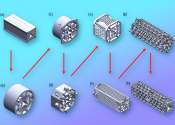Megawatt electrical motor could help electrify aviation
Aviation's huge carbon footprint could shrink significantly with electrification. To date, however, only small all-electric planes have gotten off the ground. Their electric motors generate hundreds of kilowatts of power. ...
Jun 8, 2023
1
77









